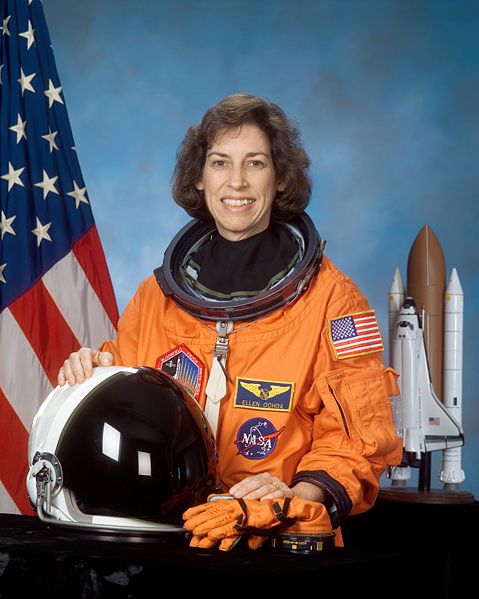
By Cammy Harbison, Voxxi
According to a report compiled by Pew Research Center, one in every five students in America is now of Hispanic descent. By 2050 it is predicted that Hispanics will make up more than half of all students found in the United States public school system and comprise 74 percent of the workforce.
At the same time, the U.S. Department of Commerce’s Economics and Statistics Administration (ESA) recently released a report showing that:
“Over the past 10 years, growth in STEM jobs was three times greater than that of non-STEM jobs, and STEM jobs are expected to continue to grow at a faster rate than other jobs in the coming decade. Meanwhile, STEM workers are also less likely to experience joblessness.”
Taking these two sets of statistics into account, it is clear that America needs to invest in STEM education for the Hispanic youth of the nation if it is to maintain a competitive edge in the global market.
Though most Americans have knowledge of Einstein, Edison, Armstrong and other Caucasian STEM role models, how many people have the ability to name equivalent role models of Hispanic descent?
Unfortunately, for most Americans, we draw a blank. The fact, however, still remains; Hispanic students need STEM role models to look to if we are to increase the number of Hispanic students entering the STEM fields.
Mario Molina—1995 Chemistry Nobel Prize Winner
Born in 1943 in Mexico City, where he grew up and attended elementary and high school. From the time he was young, Molina always had a passion for math and science and even converted a bathroom in his family’s home into a lab to play with his chemistry set.
Molina’s aunt was a chemist and helped him with more challenging experiments till he was completing work most people never consider before college. In 1960, Molina enrolled in the chemical engineering program at UNAM.
He then went on to complete his graduate and Ph.D. program at Berkeley in California. Molina is known for his Nobel Prize winning work in understanding how ozone is formed and depleted—particularly by chemicals such as chlorofluorocarbons (CFCs).
To read Molina’s personal account of his life and work, visit nobelprize.org.
Albert Baez—Physicist and Inventor
Albert Baez was born in Puebla, Mexico in 1912, but moved into the heart of Brooklyn, NY when he was just two years old.
Upon graduating high school Dr. Baez attended Drew University and earned a bachelor’s degree in mathematics, a master’s in math from Syracuse University, and a doctorate in physics from Stanford University.
In 1948, while working as a graduate student at Stanford, Mr. Baez along with his professor, Paul Kirkpatrick, invented the X-ray reflection microscope, which allowed people to examine living cells.
In fact, the technique is still used, today in the medical sciences and astronomy. For more information, read Dr. Baez’s full bio here.
Ellen Ochoa—Astronaut and First Hispanic Woman in Space
Ellen Ochoa was born May 10, 1958 in Los Angeles, California. Ochoa obtained masters’ and doctorate degrees at Stanford University, and in 1990 was selected by NASA to become the world’s first Hispanic female astronaut.
Ochoa is also the co-inventor of three patents: an optical inspection system, an optical object recognition method and a method for reducing or removing noise from images. For more on Ellen Ochoa see her full bio here.
Linda Garcia Cubero—Engineer and First Hispanic Female to Graduate from the Air Force Academy
Cubero was born in 1958 and the daughter of a United States Air Force officer, and major influence on Cubero’s future career. In 1980 she entered the AF academy and graduated with a bachelor’s in Political Science.
From there she was commissioned to the Air Force as a second lieutenant. She served in the Air Force for seven years and then began pursuing a master’s in systems engineering from Virginia Tech.
In 1998, Cubero was awarded the Women of Color Technology Award while also being inducted into the National Hispanic Engineering Hall of Fame.
Hispanic Business magazine recently named her one of the “100 Most Influential Hispanics” in the United States. For more about Cubero, see her full bio here.
Santiago Ramón y Cajal—Scientist and Nobel Prize Winner
Santiago, Ramon y Cajal, born in 1852 in Aragon Spain. Cajal was a Spanish pathologist, histologist, and neuroscientist. He won the Nobel peace prize in 1906 for his early investigations of the brain’s microscopic structure.
Many consider him to be the father of modern neuroscience. Cajal drew hundreds of illustrations of brain cells that are still in use by educators today. For more about Cajal see his full bio here.
[Image Via spacelight.nasa.gov]
This story originally appeared on Voxxi.






